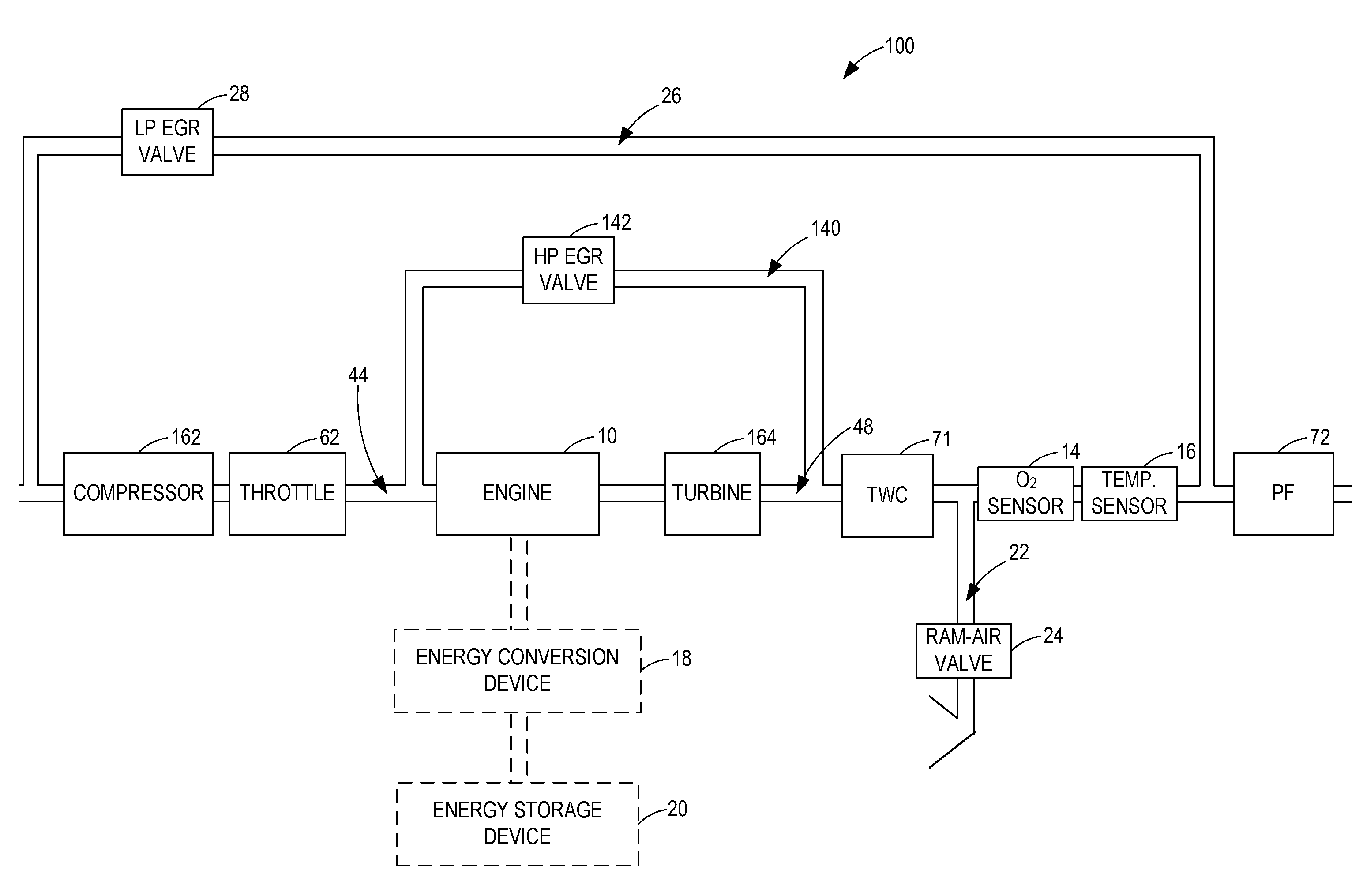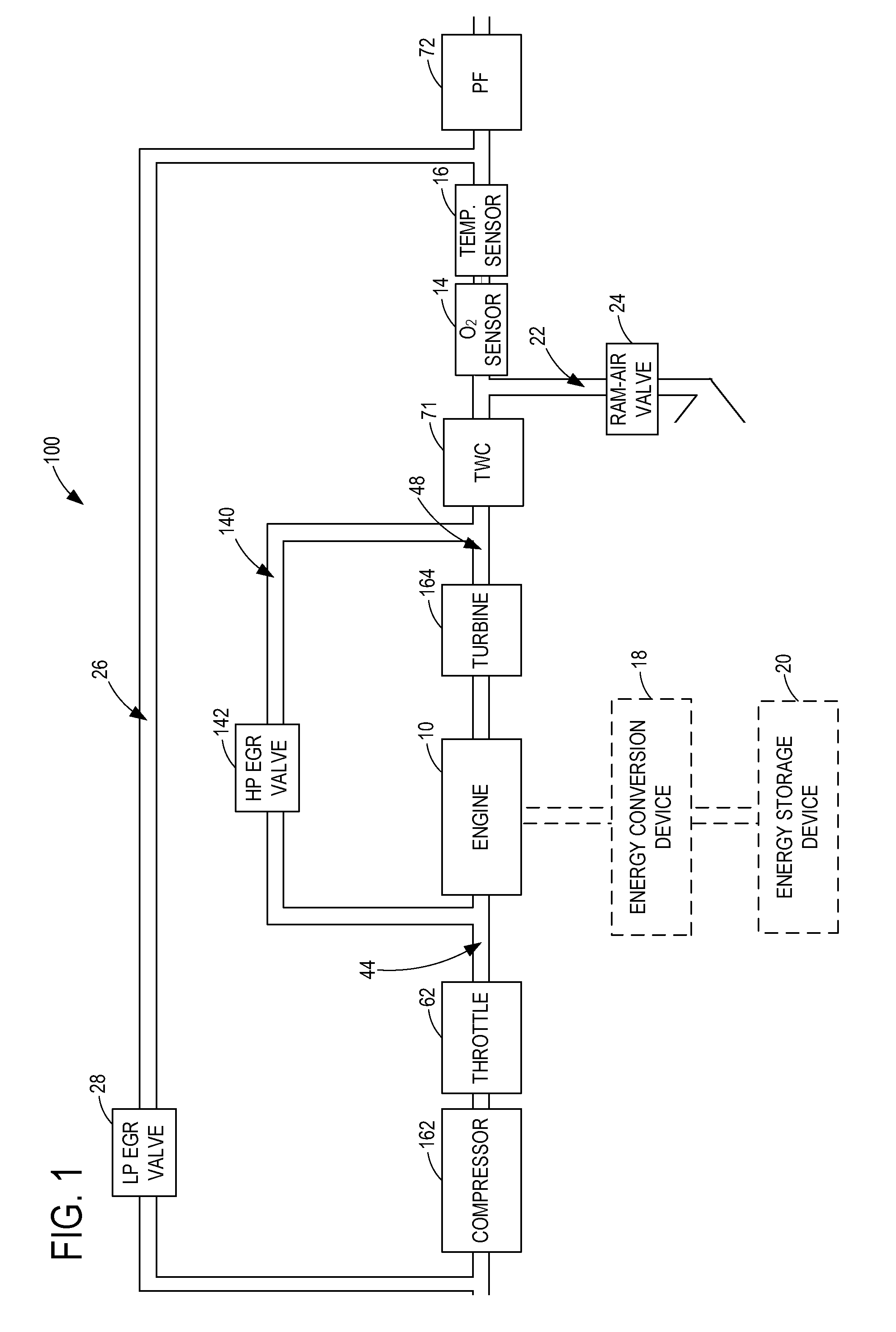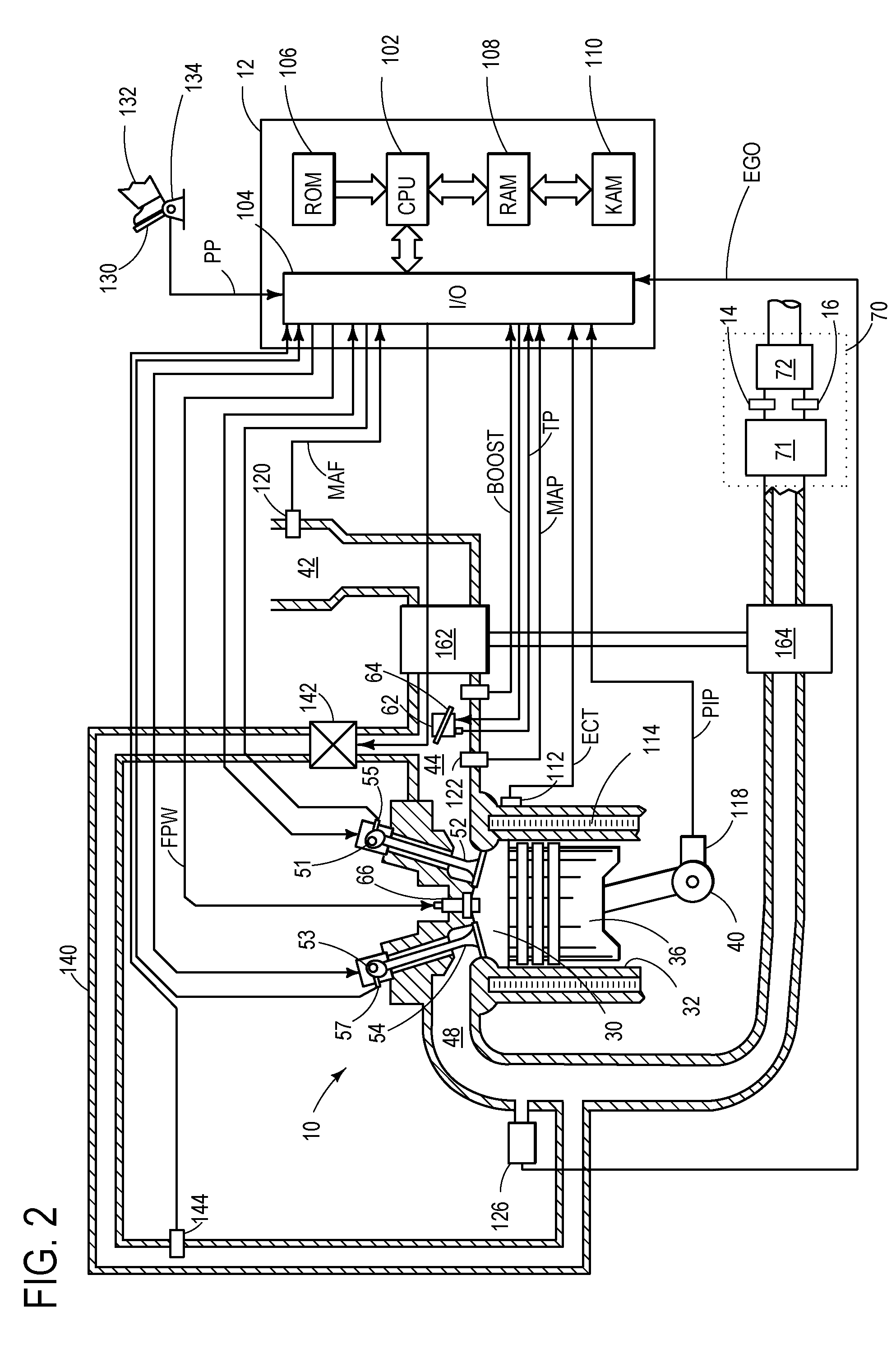Particulate filter regeneration in an engine
a technology of particulate filter and engine, which is applied in the direction of machine/engine, electrical control, exhaust treatment electric control, etc., can solve the problems of fuel not being able to sufficiently mix with air before combustion, regeneration of the filter, and increased soot of turbocharged direct injection engines, etc., to reduce turbulence, increase nox emissions, and increase soo
- Summary
- Abstract
- Description
- Claims
- Application Information
AI Technical Summary
Benefits of technology
Problems solved by technology
Method used
Image
Examples
Embodiment Construction
[0021]Systems and methods for controlling regeneration of a particulate filter downstream of an engine are provided herein. Exemplary systems for controlling regeneration are schematically illustrated in FIG. 1 and FIG. 2, and the systems may each include a three-way catalyst and a particulate filter in an exhaust passage downstream of the engine.
[0022]In order to carry out a particulate filter regeneration, excess oxygen may be delivered to the particulate filter, where excess oxygen is an amount of oxygen that is greater than an amount of oxygen delivered during normal engine running when an air-fuel ratio is about stoichiometric. However, excess oxygen in an exhaust passage may saturate an oxygen storage capacity of a three-way catalyst, because three-way catalysts have a limited amount of oxygen storage. Thus, if the engine is running during a period in which the three-way catalyst is subject to excess oxygen (e.g., during particulate filter regeneration), NOx emissions may incr...
PUM
 Login to View More
Login to View More Abstract
Description
Claims
Application Information
 Login to View More
Login to View More - R&D
- Intellectual Property
- Life Sciences
- Materials
- Tech Scout
- Unparalleled Data Quality
- Higher Quality Content
- 60% Fewer Hallucinations
Browse by: Latest US Patents, China's latest patents, Technical Efficacy Thesaurus, Application Domain, Technology Topic, Popular Technical Reports.
© 2025 PatSnap. All rights reserved.Legal|Privacy policy|Modern Slavery Act Transparency Statement|Sitemap|About US| Contact US: help@patsnap.com



